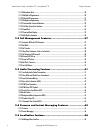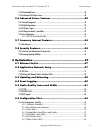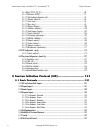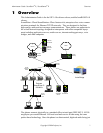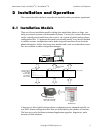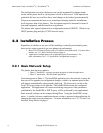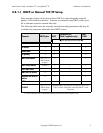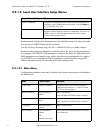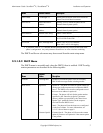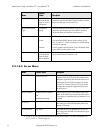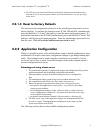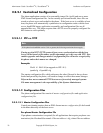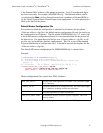Administrator Guide - SoundPoint
®
IP / SoundStation
®
IP Installation and Operation
4 Copyright © 2004 Polycom, Inc.
The configuration served by the boot server can be augmented by changes made
locally on the phone itself or via the phone’s built-in web server. If file uploads are
permitted, the boot server allows these local changes to be backed up automatically.
Polycom recommends the boot server central provisioning model for installations
involving more than a few phones. The investment required is minimal in terms of
time and equipment, and the benefits are significant.
The phones also support dynamic host configuration protocol (DHCP). When set up,
DHCP permits plug-and-play TCP/IP network setup.
2.2 Installation Process
Regardless of whether or not you will be installing a centrally provisioned system,
there are two steps required to get your phones up and running.
1. Basic TCP/IP Network Setup such as IP address and subnet mask. For more infor-
mation, see 2.2.1 Basic Network Setup on page 4.
2. Application Configuration such as application specific parameters. For
more information, see
2.2.2 Application Configuration on page 9.
2.2.1 Basic Network Setup
The phones boot up in two phases:
• Phase 1: bootROM - a generic program designed to load the application.
• Phase 2: application - the SIP phone application.
Networking starts in Phase 1. The bootROM application uses the network to query the
boot server for upgrades or configuration changes, which is an optional process that
will happen automatically when properly deployed. The boot server can be on the
local LAN or anywhere on the Internet. The bootROM then loads the configured
application. The application will restart networking using most of the parameters
established by the bootROM (a DHCP query will be performed by the application).
Basic network settings can be changed during Phase 1 using the bootROM’s setup
menu. A similar, but more sophisticated menu system is present in the application for
changing the same network parameters. For more information, see 2.2.1.2 Local User
Interface Setup Menus on page 6.



